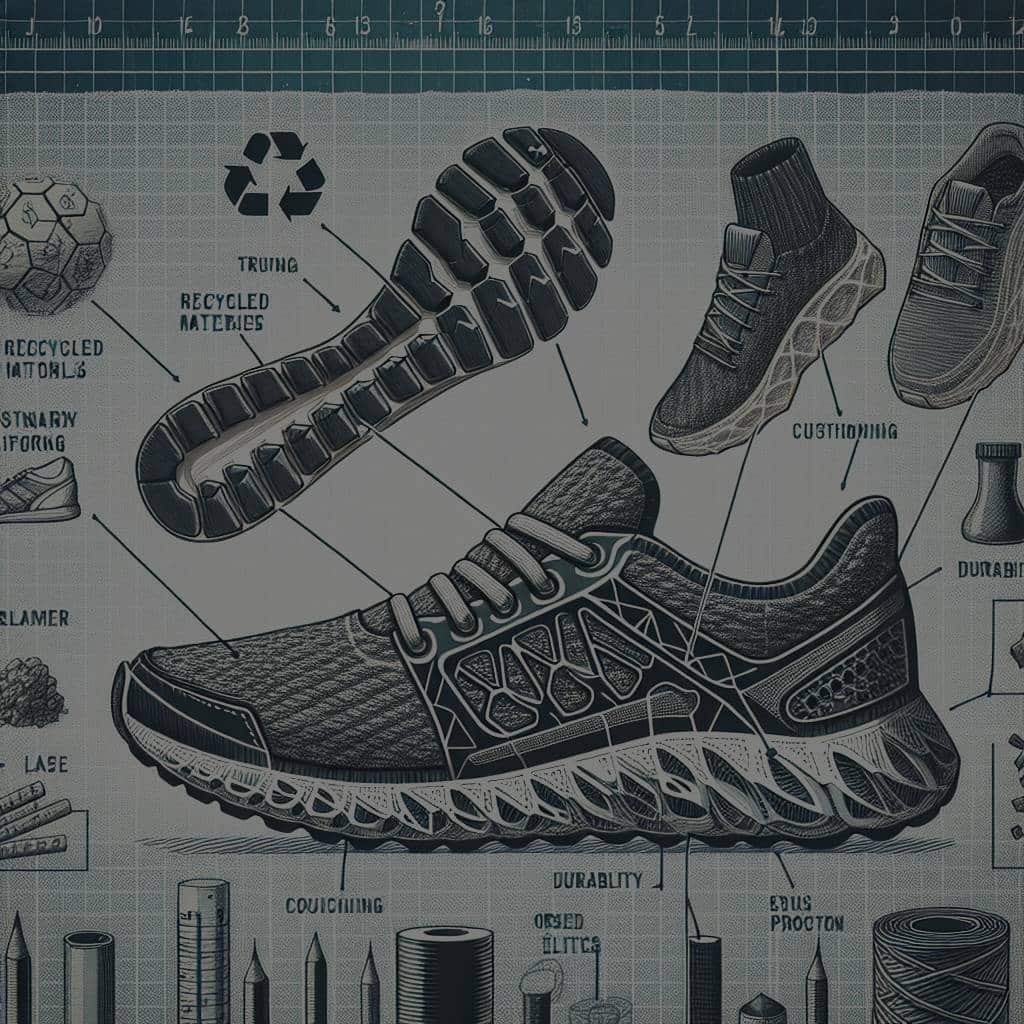In our contemporary world, the call for sustainable, eco-friendly products has reached all corners of the market, and it’s no different for the footwear industry. Now more than ever, consumers are demanding products that not only serve their needs but also help in reducing the environmental impact. The shoe industry is taking these demands seriously, with brands like Allbirds leading the way in eco-friendly footwear. But the question arises – how can we design a running shoe that is not only sustainable, uses recycled materials, and reduces carbon footprint, but also doesn’t compromise on performance? Let’s delve deeper into this topic and explore how the perfect balance can be achieved.
Understanding the Materials for an Eco-friendly Shoe
When designing a shoe, the first thing to consider is the materials that are used. For an eco-friendly shoe, you need to use materials that are sustainable and recycled. This not only reduces the carbon footprint of the shoe but also ensures that it is environmentally friendly.
Also to discover : What Are the Ethical Implications of Genetic Testing in Predicting Sports Talent?
A good starting point is to use recycled rubber for the soles. This can come from old tires or even other shoes, reducing the need for new rubber production. The upper part of the shoe can be made from recycled fabrics or materials like cotton, hemp, or bamboo, which are all sustainable and have low environmental impacts. Using recycled materials not only makes the shoe eco-friendly, but it also gives it a unique look and feel that many consumers appreciate.
Balancing Sustainability with Performance
One of the challenges in creating an eco-friendly running shoe is ensuring that it doesn’t compromise on performance. A running shoe needs to be comfortable, supportive, and durable, and these factors should not be compromised in the pursuit of sustainability.
Additional reading : What’s the Role of Sports Medicine in Managing Chronic Injuries in Veteran Athletes?
The key to this balance is in the design process. By carefully choosing the materials and design elements, it’s possible to create a shoe that is both eco-friendly and high performing. For instance, using recycled rubber for the soles can provide the necessary cushioning and support for running, while recycled fabrics can be used to create a comfortable and breathable upper.
Incorporating Innovative Technologies
As technology advances, it’s becoming increasingly easier to create products that are both eco-friendly and high performance. The shoe industry is no exception, with many brands incorporating innovative technologies into their product designs to reduce their environmental impact and enhance the performance of their shoes.
For instance, Allbirds, a brand known for its sustainable footwear, uses materials like merino wool and eucalyptus tree fiber in their shoes. These materials are not only sustainable, but they also offer superior comfort and breathability, making them ideal for running shoes.
Moreover, technology can also be used to improve the manufacturing process. For example, 3D printing can reduce waste by creating only the necessary parts of the shoe, while also allowing for precise customization to enhance performance.
Leading the Way: Brands like Allbirds
Brands like Allbirds are leading the way in sustainable shoe design. They’ve shown that it’s possible to create a range of footwear that is not only eco-friendly but also high performing. Allbirds’ commitment to sustainability is evident in every aspect of their business, from the materials they use to the way they manufacture their shoes.
Allbirds’ shoes are made from a variety of sustainable materials, including merino wool, eucalyptus tree fiber, and sugarcane. These materials are all renewable and have a much lower environmental impact than traditional shoe materials. Additionally, Allbirds uses a carbon-neutral manufacturing process, further reducing the environmental impact of their shoes.
The performance of Allbirds’ shoes is also impressive. Despite being made from sustainable materials, their shoes are comfortable, durable, and supportive, making them ideal for running. This has led to their shoes being popular with both casual runners and professional athletes alike.
The Future of Eco-friendly Running Shoes
With the demand for sustainable products only set to increase, the future of eco-friendly running shoes looks promising. With brands like Allbirds leading the way, it’s clear that it’s possible to create shoes that are both environmentally friendly and high performing.
Innovative technologies are also likely to play a key role in the future of sustainable shoe design. With advances in materials science and manufacturing techniques, it’s likely that we’ll see even more eco-friendly and high-performance shoes in the future.
As consumers, we can play a role in this future by choosing to support brands that prioritize sustainability and by demanding that all brands take steps to reduce their environmental impact. Together, we can help create a future where all shoes are eco-friendly and high performing.
Streamlining the Supply Chain for Sustainability
Aligning with the eco-friendly demand, it also becomes necessary to optimize the supply chain processes to further decrease the environmental impact of producing running shoes. A brand can ensure the use of recycled and sustainable materials in its shoes, but if the process to get those materials and products to the consumer isn’t environmentally friendly, then the overall carbon footprint isn’t reduced effectively.
The supply chain in the footwear industry includes everything from material sourcing to manufacturing, distribution, and product end-of-life management. Each of these stages needs to be evaluated and optimized for sustainability. For instance, sourcing materials locally can reduce carbon emissions associated with transportation. Similarly, optimizing manufacturing processes to use less energy, recycle waste, and minimize water usage can also significantly reduce the carbon footprint.
End-of-life management is another crucial aspect. Brands can design shoes to be easily recyclable at the end of their life cycle, making it easier for consumers to dispose of their old shoes responsibly. Some companies, like Hylo Athletics, even offer take-back programs where old shoes can be returned and recycled into new products.
##Trends in Eco-friendly Materials for Running Shoes
Materials innovation plays a pivotal role in the design of eco-friendly running shoes. The industry is witnessing a shift towards the use of more sustainable materials like organic cotton, merino wool, natural rubber, and recycled polyester.
Merino wool, for example, is not only a sustainable material but also provides excellent breathability and temperature regulation, making it perfect for running shoes. Natural rubber, on the other hand, offers excellent traction and durability while being biodegradable.
Another exciting material trend in the market is the use of carbon fiber made from captured carbon emissions. This technology, as seen in the Alphafly Nature running shoes, transforms carbon emissions, a major environmental problem, into a high-performance material for running shoes.
##Conclusion
Creating an eco-friendly running shoe that doesn’t compromise on performance is a multifaceted challenge that goes beyond just using recycled materials. It involves streamlining the entire supply chain, optimizing the manufacturing process, and continuously exploring and incorporating innovative, environmentally friendly materials. Brands like Allbirds and Hylo Athletics have shown that it’s possible, and with increasing consumer demand for such products, the future looks promising for sustainable footwear.
The trends in the industry indicate a shift towards greater sustainability, with a focus on reducing carbon emissions, utilizing renewable resources, and improving end-of-life processes. As consumers, our choices can have a significant impact. By supporting brands that prioritize sustainability, we not only get high-performance products but also contribute to the well-being of our planet.
It’s clear that the future of running shoes is not just about speed and comfort, but also about being responsible stewards of our environment.






